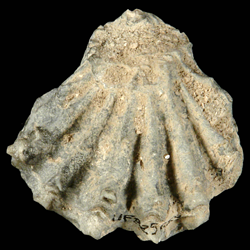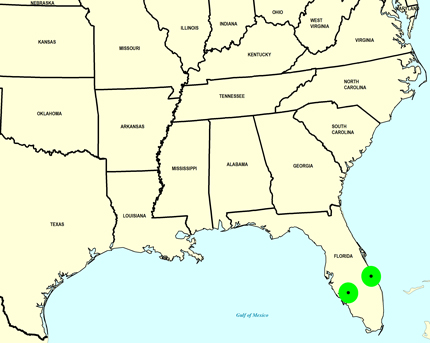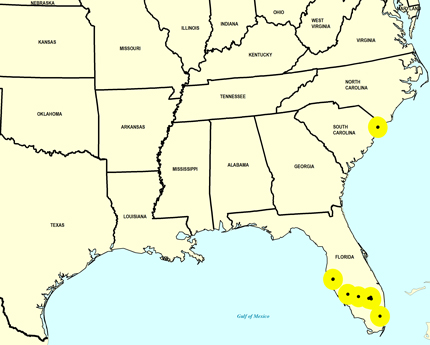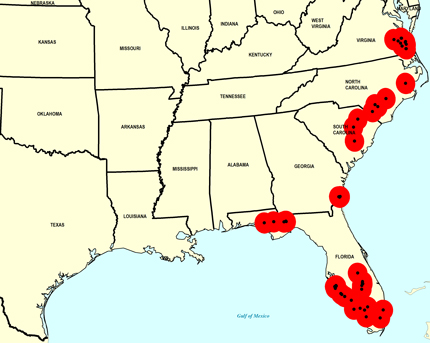
Plicatula marginata

- Phylum: Mollusca
- Class: Bivalvia
- Order: Pectinida
- Family: Plicatulidae
- Genus: Plicatula
- Species: Plicatula marginata (Say, 1824)
Geological Range
Late Pliocene to Late Pleistocene; Extinct.
Paleogeographic Distribution
Southern Florida to Virginia.
Remarks
Original Description (from Say, 1824, p. 136-137):
"Shell ovate-cuneiform, somewhat arcuated at base; with about three much elevated folds, producing very profound undulations on the edge of the shell; the intermediate fold is bifid; the whole surface is marked by rather gross concentric wrinkles; inner margin dusky or blackish, with a series of granules on one valve, received into corresponding cavities in the opposite valve.
Length one inch and a fifth, breadth one inch.
This species is very distinct from the P. plicata, Linn. of the West Indies, and from that of the East Indies, hitherto confounded with the plicata, but to which Lamark's name of gibbosa may be transferred.
Of the known fossil species, it seems to approach nearest to the angulata, Lam. but the folds are neither squamous nor angulated."
To access this description in its original formatting through the Biodiversity Heritage Library, click here.
Stratigraphic Occurrences
- Late Pleistocene
- Anastasia Formation (S. FL)
- Fort Thompson Formation? (S. FL)
- Middle Pleistocene
- Bermont Formation (S. FL)
- Bermont Formation? (S. FL)
- Canepatch Formation (SC)
- Early Pleistocene
- Bear Bluff Formation (SC)
- Caloosahatchee Formation (S. FL)
- Chowan River Formation (VA)
- Nashua Formation (N. FL)
- Waccamaw Formation (SC, NC)
- Late Pliocene
- Croatan Formation (NC)
- Duplin Formation (SC, NC)
- Duplin / Raysor formations (GA)
- Jackson Bluff Formation (N. FL)
- Raysor Formation (GA, SC)
- Tamiami Formation (Buckingham Limestone) (S. FL)
- Tamiami Formation (Murdock Station Member) (S. FL)
- Tamiami Formation (Lower) (S. FL)
- Tamiami Formation (Pinecrest Beds) (S. FL)
- Yorktown Formation (NC, VA)
- Yorktown Formation (Moore House Member) (VA)
- Yorktown Formation (Lower) (VA)




